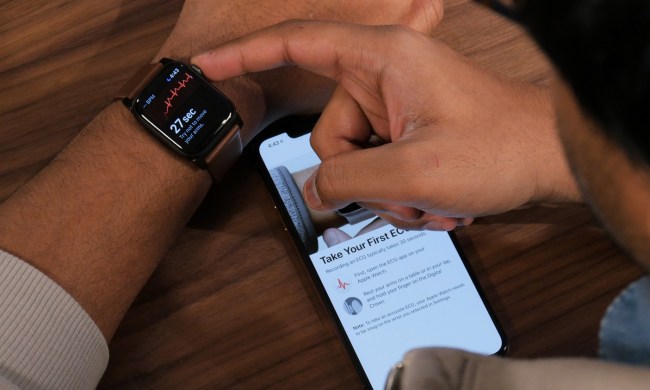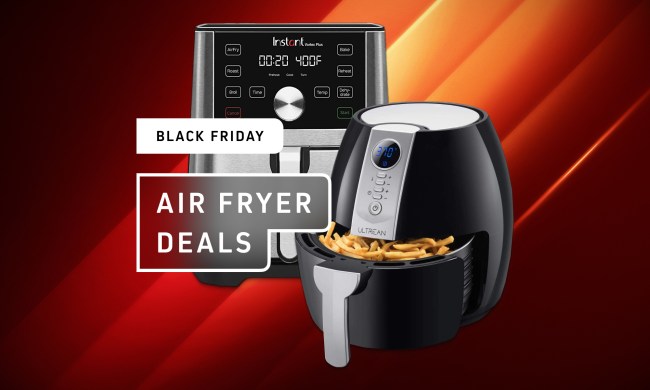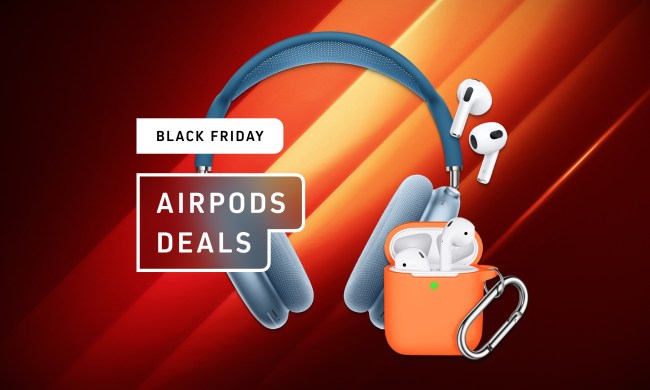As it spreads and affects the brain, those diagnosed with CTE experience a drastic alteration of mood and behavior, as well as a significant reduction in memory and thinking capacity. In the worst of cases, its side effects could even lead to an early death. Though much of this information was already widely known — across the NFL, no less — McKee’s study hammered this point home with some damning findings: 99 percent of the brains she studied (110 of 111) showed signs of CTE.
CTE is both a massive health dilemma and a bombshell capable of destroying the NFL, an organization projected to bring in some $14 billion in revenue in 2017. To save brains, and the sport, a small venture based in Seattle called Vicis set out to develop a solution.
Led by some of the brightest doctors and engineers in the country, the company chose to reimagine the only piece of equipment that stands between a player and a concussion: the helmet.
A new approach for a new helmet
Despite minor upgrades since it debuted more than a century ago, the football helmet has remained more or less the same. But Vicis was ready to design a full-on reboot.
“It seemed like there was an opportunity to help reduce the risk of concussion and the helmet was a logical place to look.”
To design a different type of helmet, Vicis had to start with a different type of approach — and different people. The company recruited a council of experts — including neurosurgeons, concussion specialists, and former NFL team physicians — to reimagine safety from the ground up.
“About five years ago, there was a lot of energy being put toward sensors and sensing technology, and it struck me that sensing was really after the fact,” said Dr. Samuel Browd, Seattle Children’s Hospital neurosurgeon, to Digital Trends. “It seemed like there was an opportunity to look at something that may help reduce the risk of concussion or other injuries, and it seemed like the helmet was a logical place to look. As we started to get a little deeper into what current helmets were and what they were intended for, we saw there was an opportunity to innovate in that space.”
Browd cold-called Per Reinhall, the University of Washington’s chair of mechanical engineering, for help. Without a preconceived idea of what a helmet should look and function like, Vicis’ team of doctors and academics sat before an empty drawing board. Then the real work began.
Columns are key
Browd and Reinhall concocted their concept around this question: What is the current state of medical knowledge around concussions, and what’s the best science out there to support it?

Early on, the team looked at the role rotational forces have in concussion cases and found traditional helmet technology to be supremely deficient in addressing them. Their initial helmet concepts zeroed in on addressing these forces, instead of focusing squarely on linear impacts.
“Originally, helmets were designed to deal with catastrophic injuries like skull fracture, subdural epidurals, and hemorrhages, and they’ve done a good job of that, but they were never really intended to address rotational forces which we think lead to concussions,” Browd said. “We had a nice opportunity to start completely from scratch, and take what we thought would be the best engineering principles and apply it to that problem.”
After three years of research and $20 million in expenditures, Vicis had a working prototype. It was called the Zero1.
Vicis addressed the issue with dozens of columns, inserted as the second “reflex layer” of the helmet, right below the hard outside layer, dubbed the lode shell. During an impact, these columns bend, compress, and move, helping absorb much of the incoming force — whether it’s a direct, linear collision, or the kind of tangential blow typically associated with the rotational forces responsible for concussions.
Below the lode shell and reflex layer, the so-called arch shell works with the company’s Axis Fit System to cradle the player’s head. Vicis measures the length and breadth of the head (or aspect ratio) to assign one of three specifically sized arch shells for a glove-like match. The helmet’s fourth layer — the Form Liner — is comprised of unique foam and works in conjunction with the arch shells to distribute pressure evenly across the head.
After three years of research and $20 million in expenditures, Vicis had a working prototype. It was called the Zero1.
Off the drawing board and into the Smash Lab
Prototype in hand, the Vicis team knew a massive hurdle lay in front of them: proving it worked. The helmet was revolutionary on paper, but if it failed to perform in tests, or even performed comparably to competitors, it was worthless. After all, mainstay companies like Schutt, Riddell, and Xenith already had the market cornered; there’d be no reason for an up-and-comer to draw much interest if it didn’t completely rock the industry’s boat.
To push the Zero1 to its limits, Vicis developed the Smash Lab, a torture chamber every helmet must survive to abide by the standards set by the National Operating Committee on Standards for Athletic Equipment (NOCSAE). Conducted by a pair of employees dubbed the Smash Brothers, these trials consist of drop tests, various pressure readings, and, most brutal of all, a linear impact test completed by way of the aptly named Linear Impactor rig.
Vicis opted to use the same Linear Impactor rig the NFL and National Football League Players Association use to test each helmet worn throughout the season, which allows engineers to continuously test the Zero1 — and any of its successors — to the exact standards set by the league itself.
The top of its class
Prior to every season, the NFL and NFLPA task a team of biomechanical experts with testing any helmet that may potentially be worn that year. Each helmet endures a simulation of the conditions most likely to cause concussions in games, then receives a rating based on its efficiency in preventing head trauma. The results feature a who’s who of helmet manufacturers. Every year, several models from each brand make the cut, and several fall short.
In just its first year in the testing pool, the Zero1 found itself atop the NFL and NFLPA’s table of performance results for 2017, outpacing its competition by a large margin. In light of this testing, 25 of the NFL’s 32 teams contacted Vicis about using the Zero1 in training camp, with several of those teams planning to don the innovative helmet during the regular season.
Vicis takes the field with more than just an innovative approach to preventing concussions; its tech may dictate the future of the NFL.
Unsurprisingly, it’s even caught the attention of a few National Collegiate Athletic Association programs; during our visit to the Vicis headquarters in Seattle, we saw models adorned in the team colors for Florida State, Ohio State, and Michigan, among others.
Aside from the interest shown by NFL and NCAA teams, Vicis itself is teaming with a number of powerful supporters. The Vicis Coalition — consisting of Seattle Seahawks players Richard Sherman and Doug Baldwin, Kansas City Chiefs quarterback Alex Smith, and even former NFL legends Tony Dorsett, Tim Brown, and Jerry Rice — helps promote the company’s vision of improving the safety of the game at all levels.
“We benefited a lot from the generosity of elite team equipment managers, athletic trainers, and players,” Vicis CEO Dave Marver told Digital Trends. “We brought them concept after concept, and they gave us wonderful feedback and really helped shape this product into what it is today.”
Even before it debuted on the NFLPA’s testing radar, the Health and Safety leadership of the NFL — in partnership with General Electric and Under Armour — named Vicis a winner of its annual Head Health Challenge. The award netted the group $750,000 over two years to finish development of the Zero1.
Safety first, performance second
Besides building a helmet that would protect players, Vicis also wanted to build one they would want to wear.
To that end, the Zero1 boasts a unique venting system that drastically reduces heat, as well as the widest field of peripheral vision for the wearer, better equipping them to avoid blind-side hits and locate the football more effectively.
Sunglass manufacturer Oakley teamed with Vicis to develop a high-quality optics system called the Vicis Edge Shield. Featuring Oakley Prizm lens technology, the Vicis Edge Shield is designed to provide wearers with “dramatically enhanced detail” while providing 100 percent protection from UV rays — in addition to physically protecting a player’s eyes during games.
“Oakley’s collaboration with Vicis is a testament to the brand’s belief that everything can and will be made better,” said Ryan Saylor, Oakley vice president of advanced product.
“Extending our leading optics technology to another field allowed us to create the highest-performance football shield for the highest-performance helmet.”
Taking the field in 2017
NFL teams are clamoring to get their heads in the helmets. From players like Philadelphia Eagles quarterback Carson Wentz sporting one during training camp, to its appearance in a preseason game between the Carolina Panthers and Houston Texans, the Zero1 is finally making its way onto the gridiron.
“We’ve launched the product finally, after three and a half years, and have received orders from almost half the NFL teams already. Many of them used the Zero1 during OTAs [organized training activities] and minicamp, but now we’re gearing up to ship them to the teams who want to use it during the season,” Marver added.

“For us, it’s a very satisfying time, to have taken this all the way from a concept to a product that’s the top-performing helmet in the NFL, and now to see it on the field actually benefiting players.”
The 2017 NFL season kicks off September 7 as the Kansas City Chiefs travel to Foxboro, Massachusetts, to take on the reigning champion New England Patriots. This will be the first time the Zero1 is used in a regular season game, courtesy of Chiefs quarterback Alex Smith. After wearing it during training camp and preseason, Smith reportedly felt comfortable in the Zero1 and will likely run onto the field in Week 1 with it protecting his head.
Success for Vicis is success for football
Mounting safety concerns have already rattled the NFL. Players traditionally deemed fit — in terms of age and skill level — continue to walk away from the game. Since the Zero1 is only now entering it’s first game, it remains to be seen if it’s capable of drastically improving player safety and tidying up the NFL’s tarnished image. Though it’s unlikely the NFL dries up without the emergence of a company like Vicis, even a few star players walking away from the game is damning evidence of an eventual decline.
So now, as the company readies itself to appear on the biggest stage of its young existence, it takes the field with more than just an innovative approach to preventing concussions; its technology may very well dictate the future of the NFL. Vicis’ mission statement reads that it wants to “protect the athlete and elevate the game,” and with the Zero1, it appears poised to not just deliver on that goal, but to stand as the single-most important technological advancement the sport has ever seen.
Of course, many younger football players will never set foot anywhere near the NFL — or the gear it can provide. The Vicis Foundation, led by Lisa Ertz — mother of Philadelphia Eagles tight end Zach Ertz — helps raise funding for high school and youth football leagues to provide the latest protective equipment, regardless of a player’s socioeconomic status.
With tangible benefits taking place on and off the field, the work accomplished by Vicis should have a ripple effect on the most popular sport in America, at all levels. “We started with football and we’re going to win in football first,” Marver told us toward the end of our conversation. “We have a room full of bright engineers, and they’ve become really good at developing structures that mitigate impact, and those structures are relatively easily applicable to other sports. Hockey, lacrosse, even traditionally non-helmeted sports. If there’s a concern about head health, and we can bring peace of mind to parents and athletes, we’re going to do that. We want to make a difference.”






